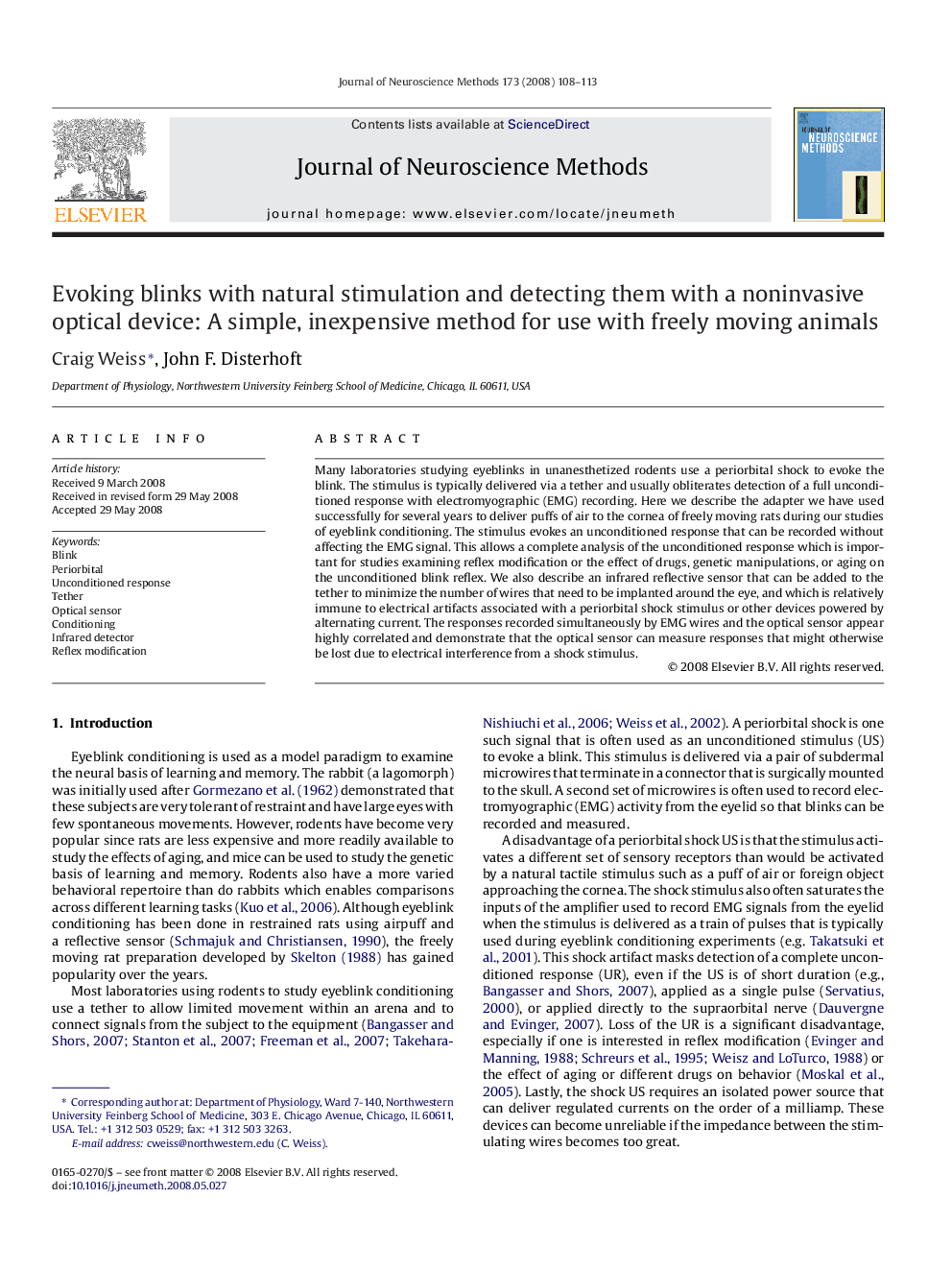| Article ID | Journal | Published Year | Pages | File Type |
|---|---|---|---|---|
| 4336336 | Journal of Neuroscience Methods | 2008 | 6 Pages |
Many laboratories studying eyeblinks in unanesthetized rodents use a periorbital shock to evoke the blink. The stimulus is typically delivered via a tether and usually obliterates detection of a full unconditioned response with electromyographic (EMG) recording. Here we describe the adapter we have used successfully for several years to deliver puffs of air to the cornea of freely moving rats during our studies of eyeblink conditioning. The stimulus evokes an unconditioned response that can be recorded without affecting the EMG signal. This allows a complete analysis of the unconditioned response which is important for studies examining reflex modification or the effect of drugs, genetic manipulations, or aging on the unconditioned blink reflex. We also describe an infrared reflective sensor that can be added to the tether to minimize the number of wires that need to be implanted around the eye, and which is relatively immune to electrical artifacts associated with a periorbital shock stimulus or other devices powered by alternating current. The responses recorded simultaneously by EMG wires and the optical sensor appear highly correlated and demonstrate that the optical sensor can measure responses that might otherwise be lost due to electrical interference from a shock stimulus.
